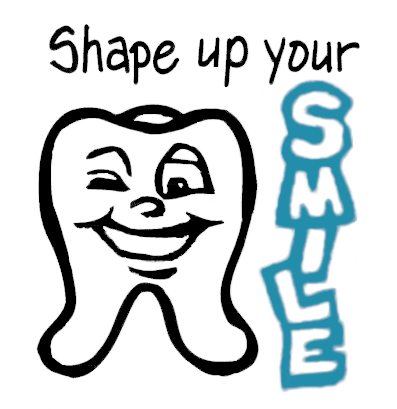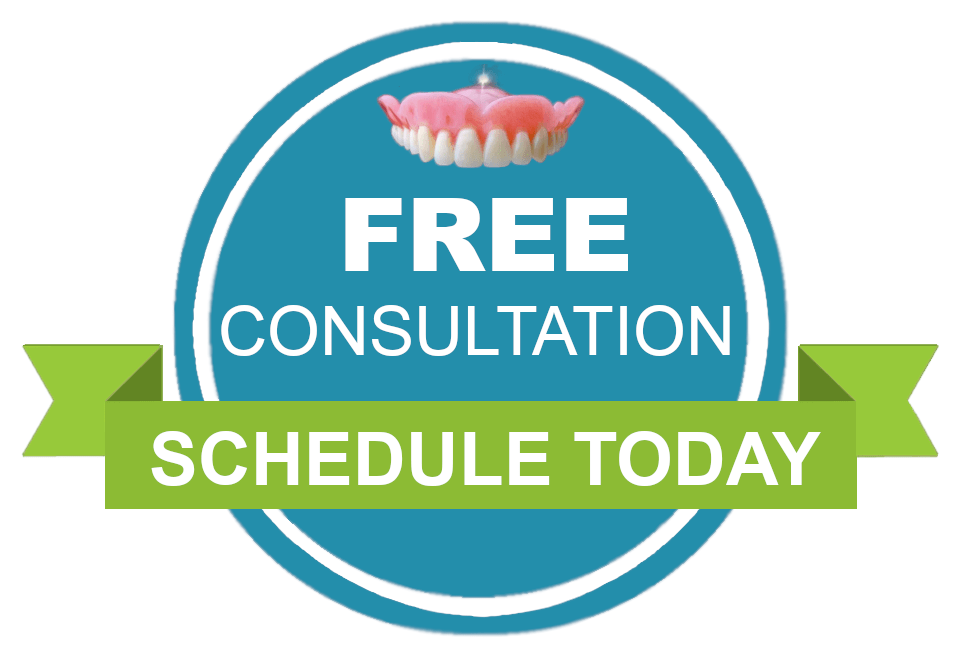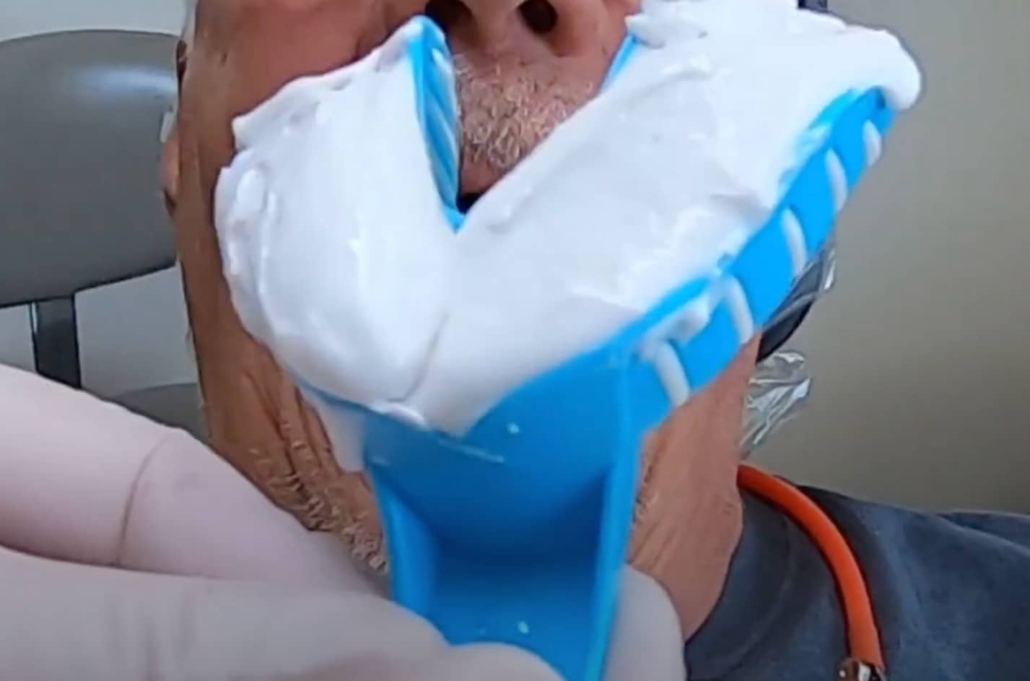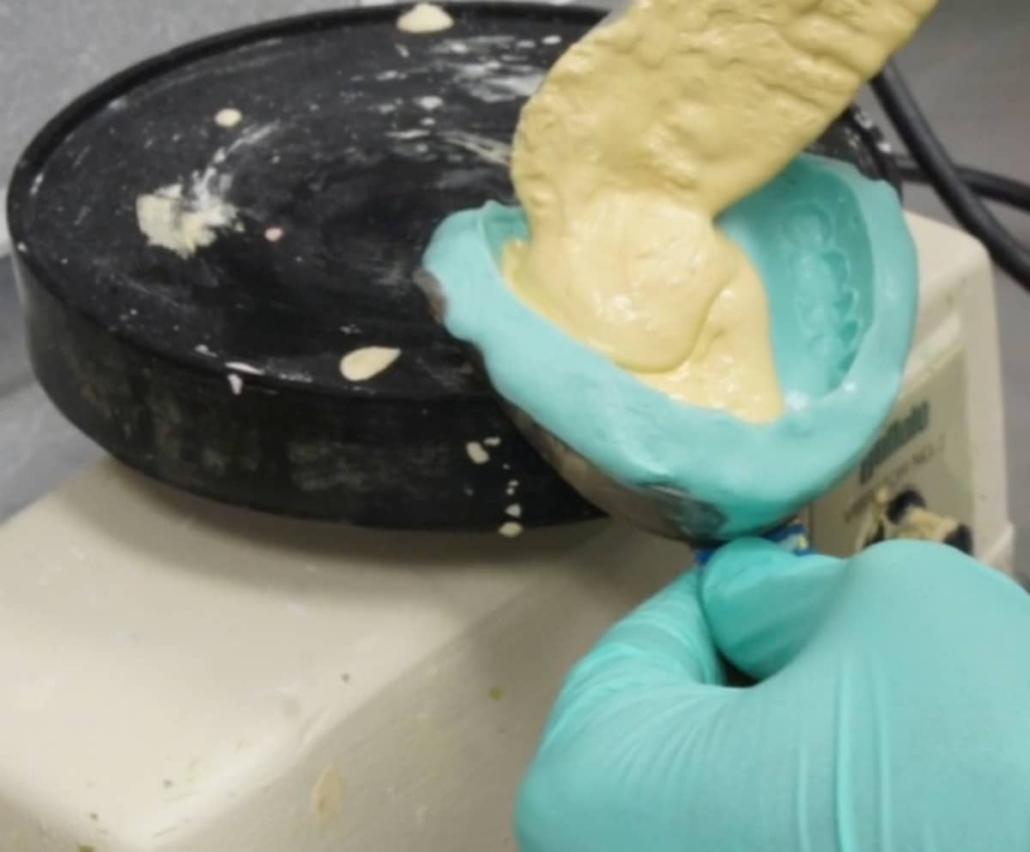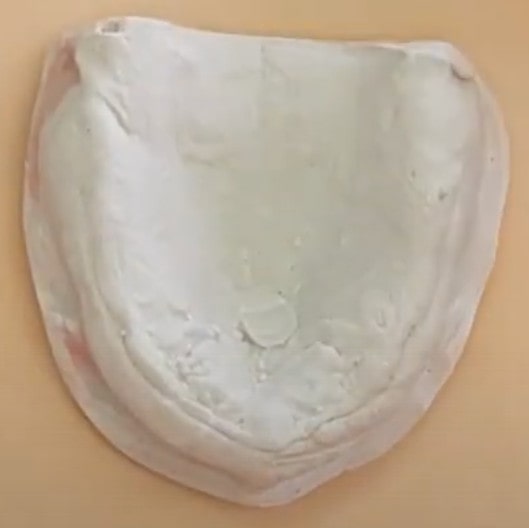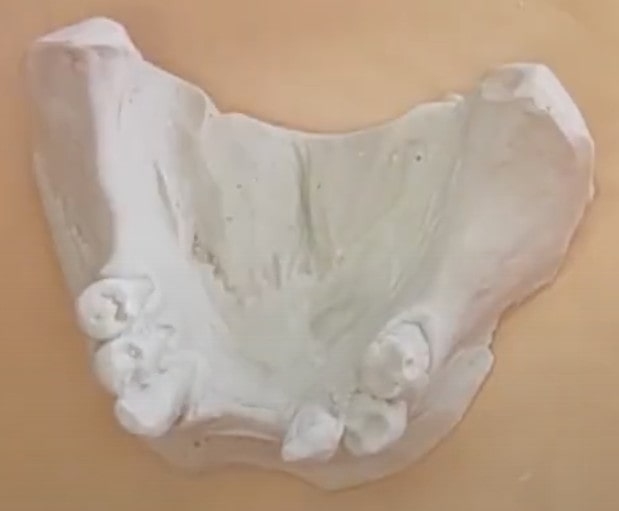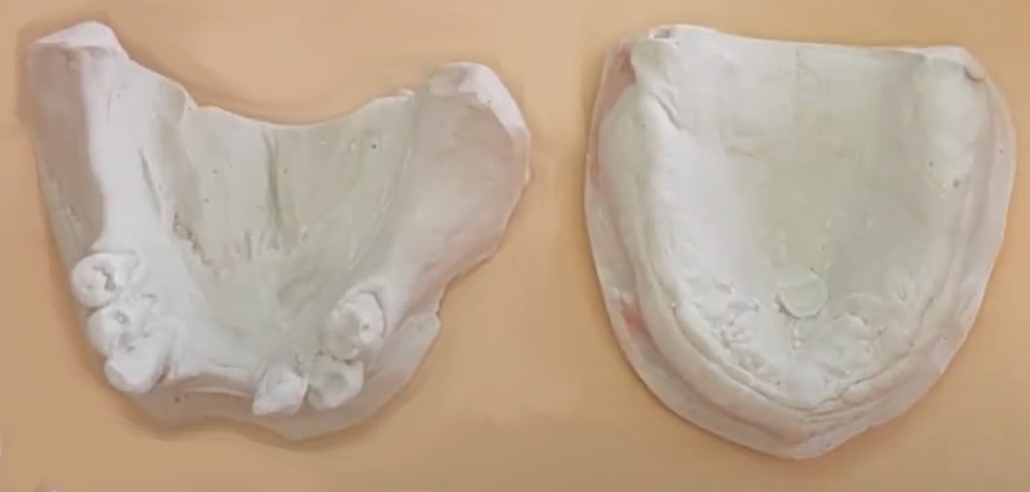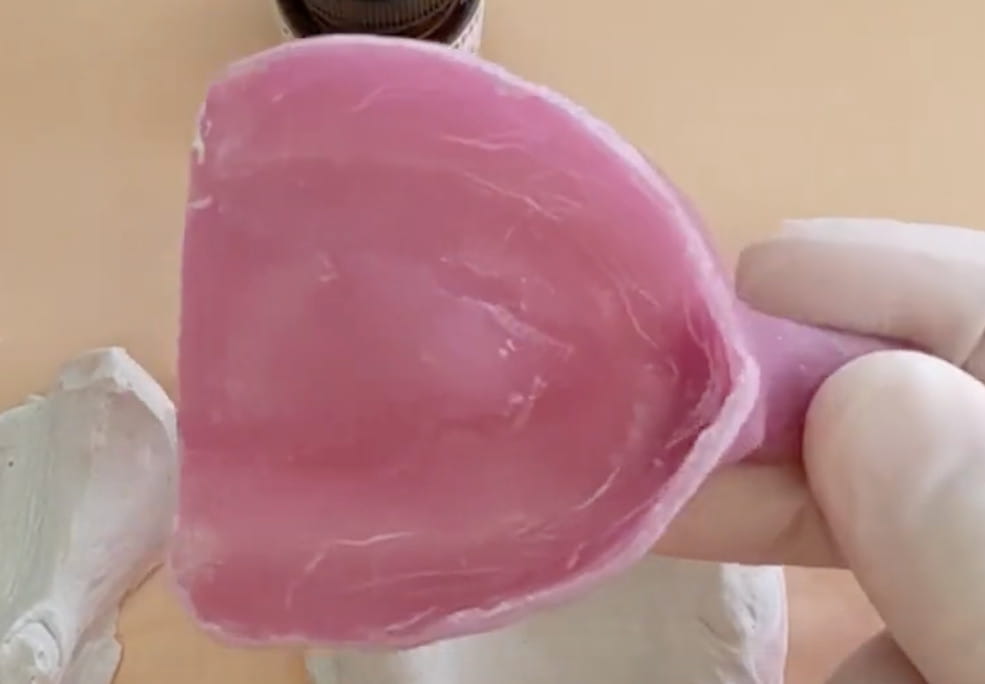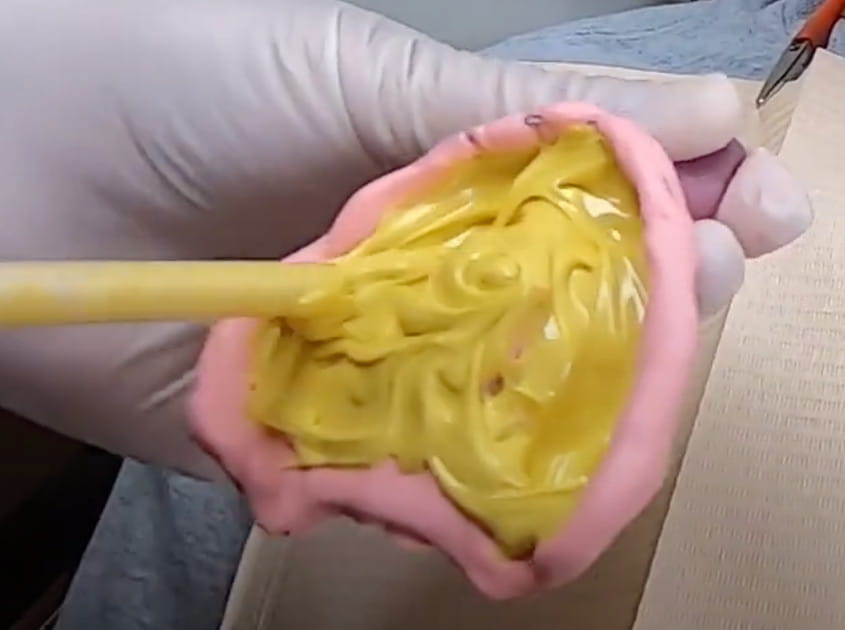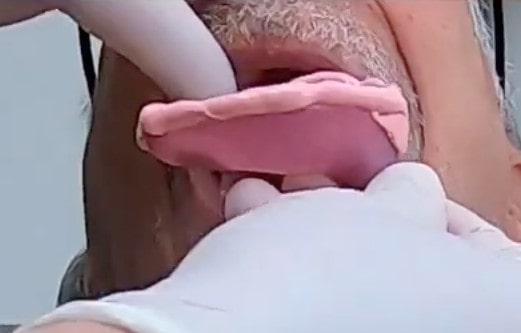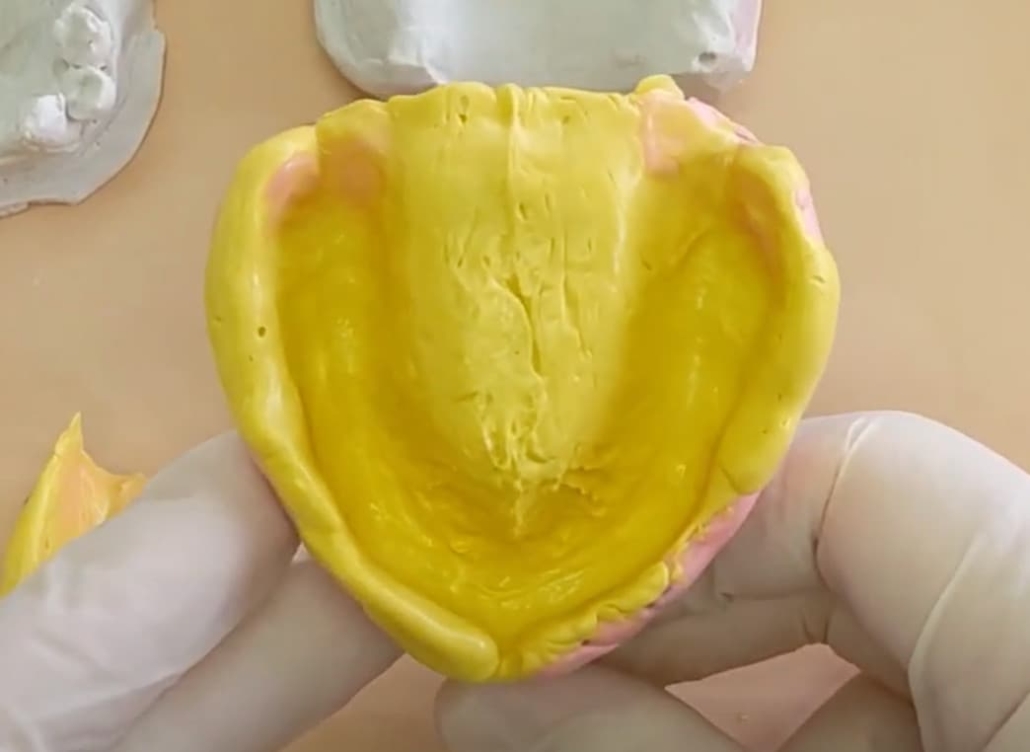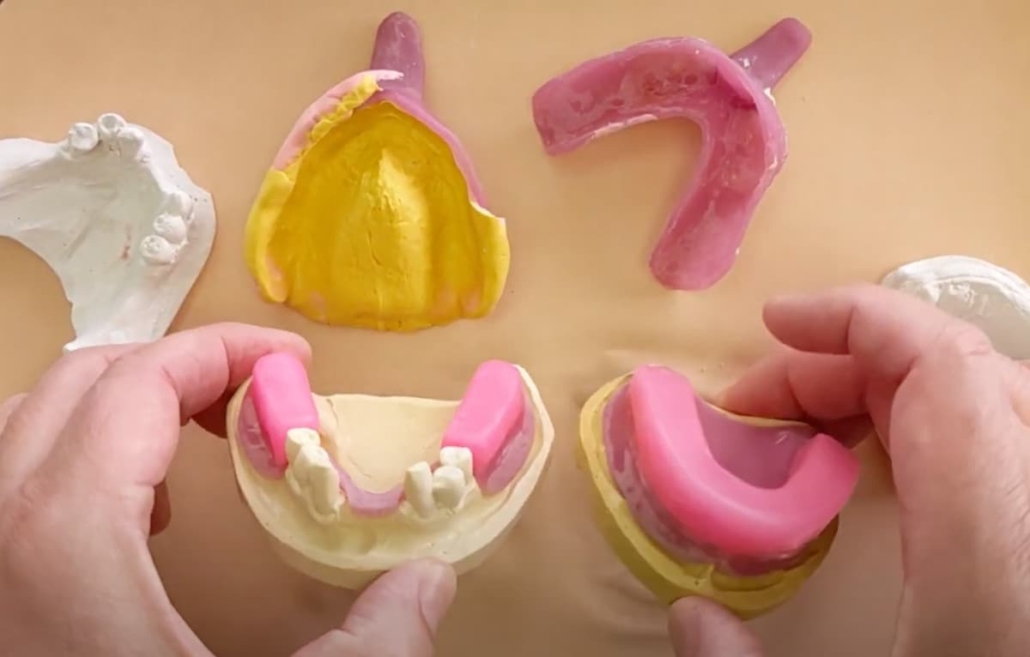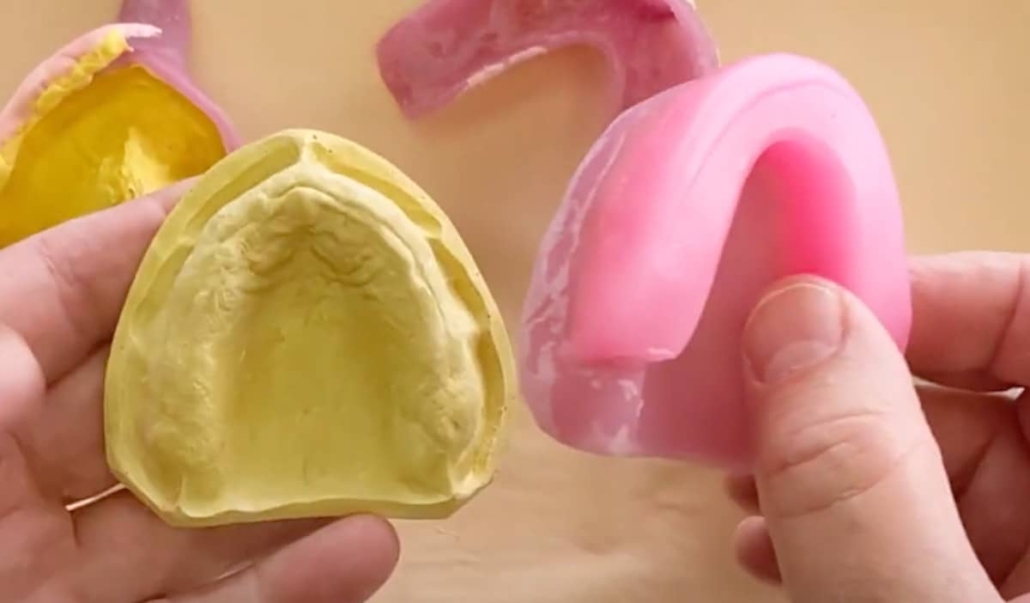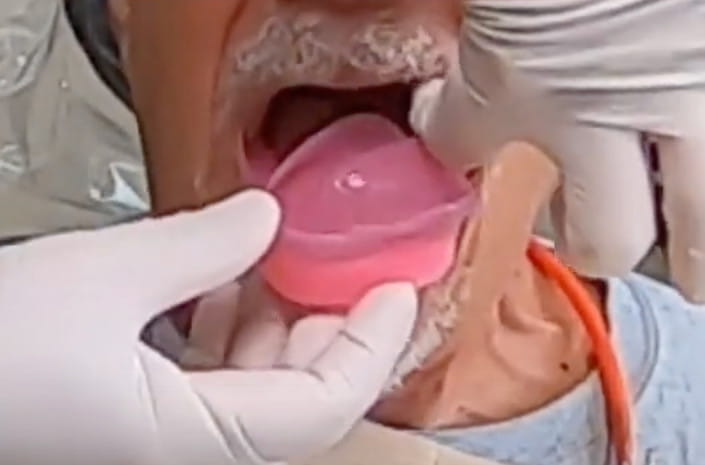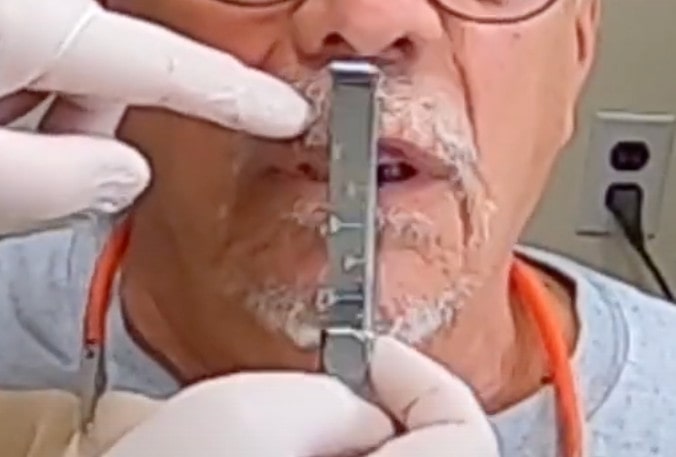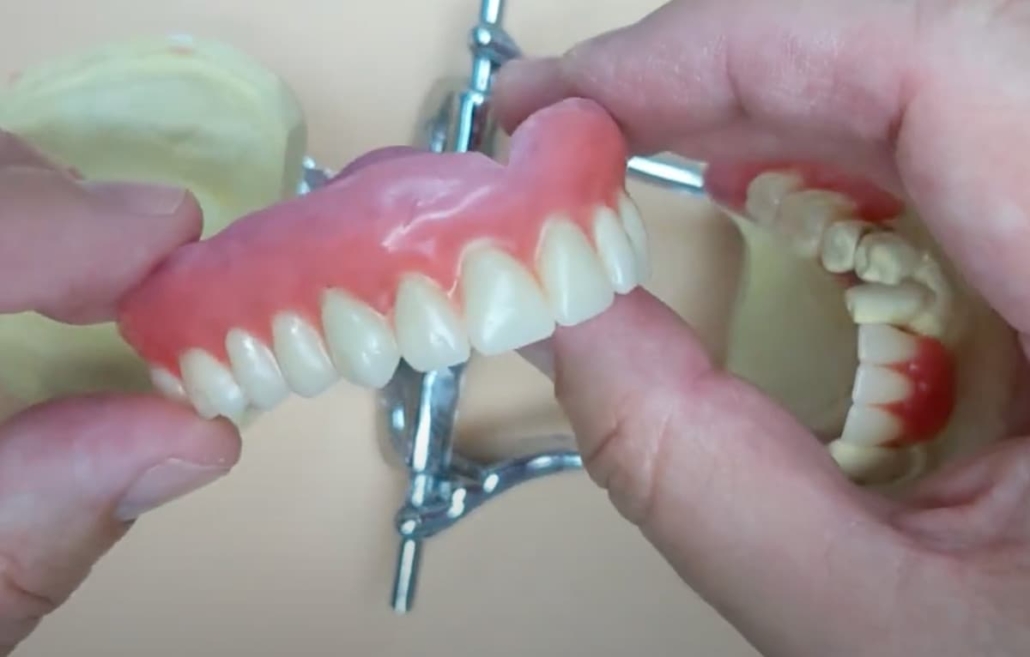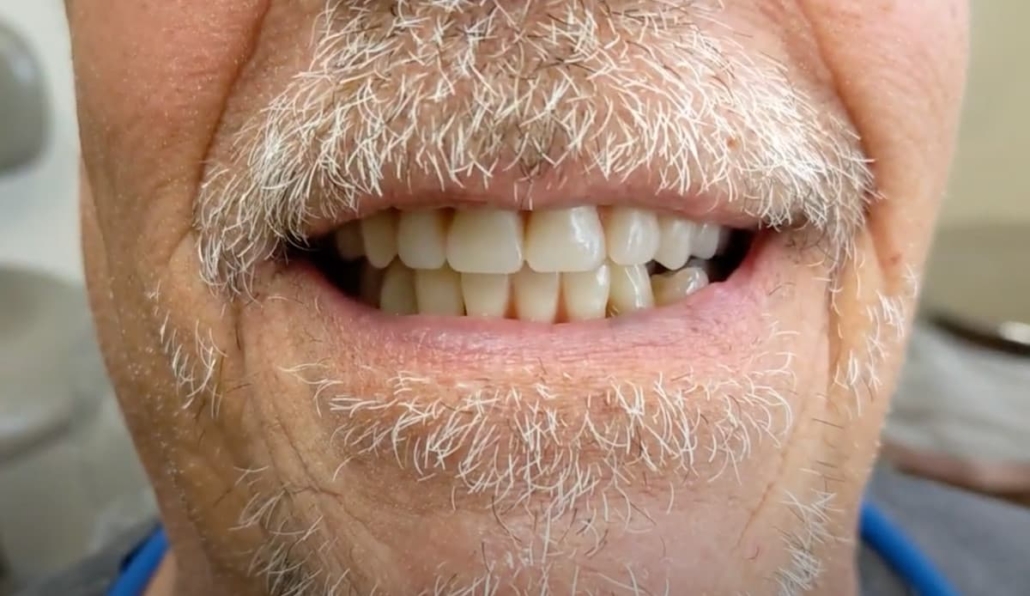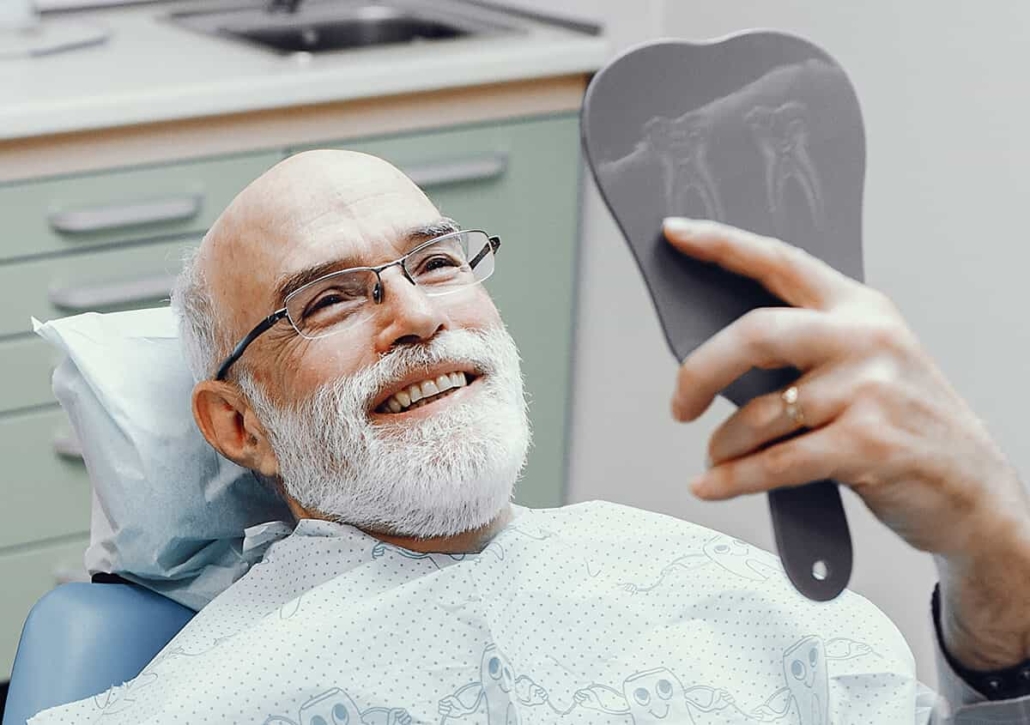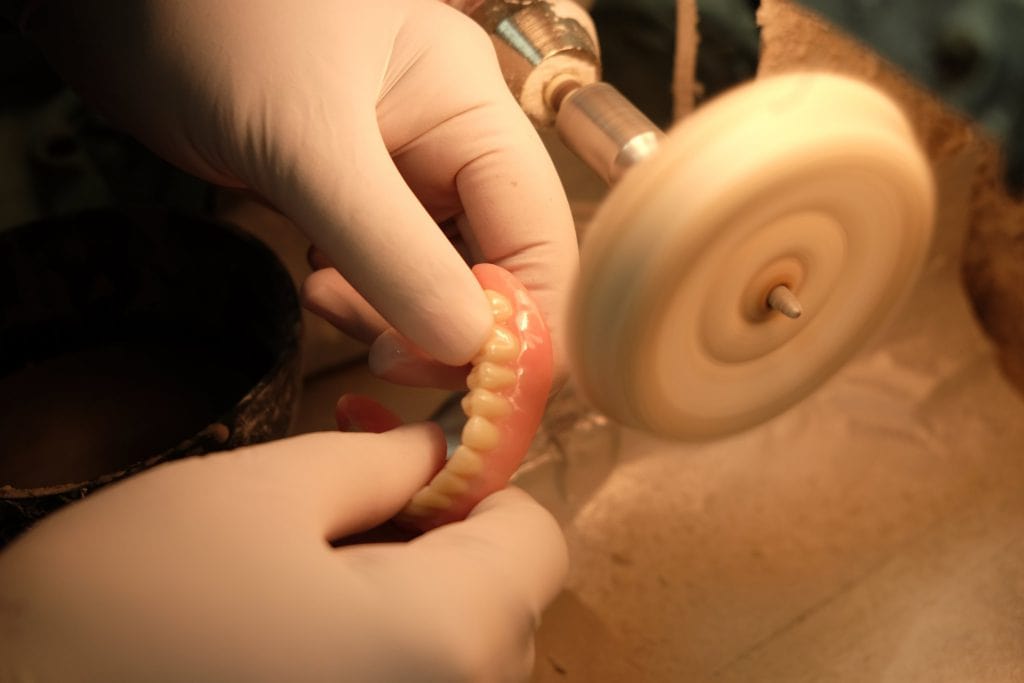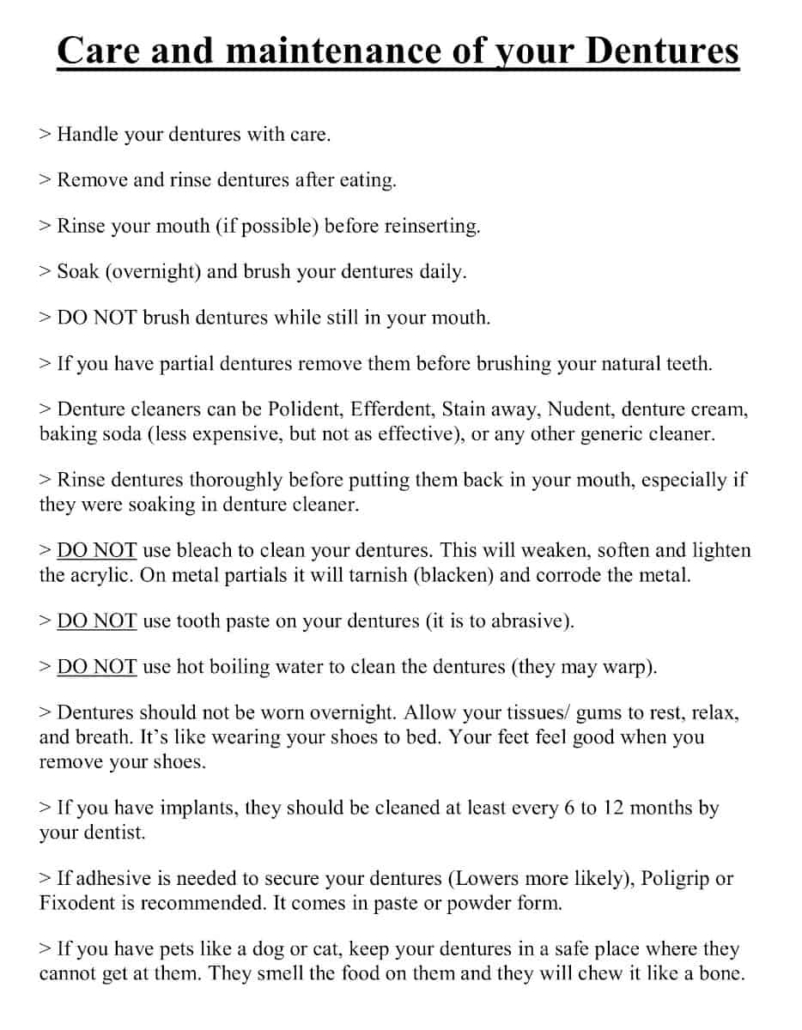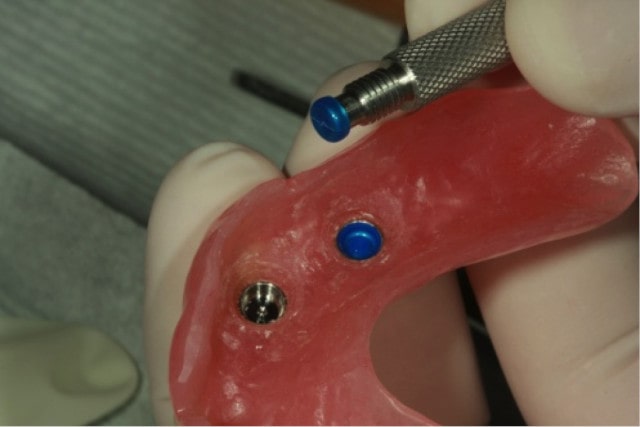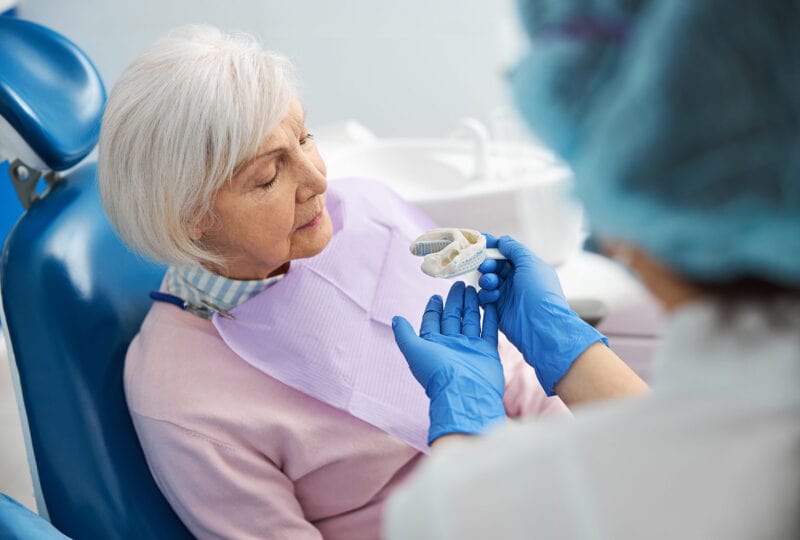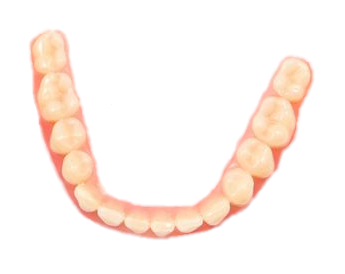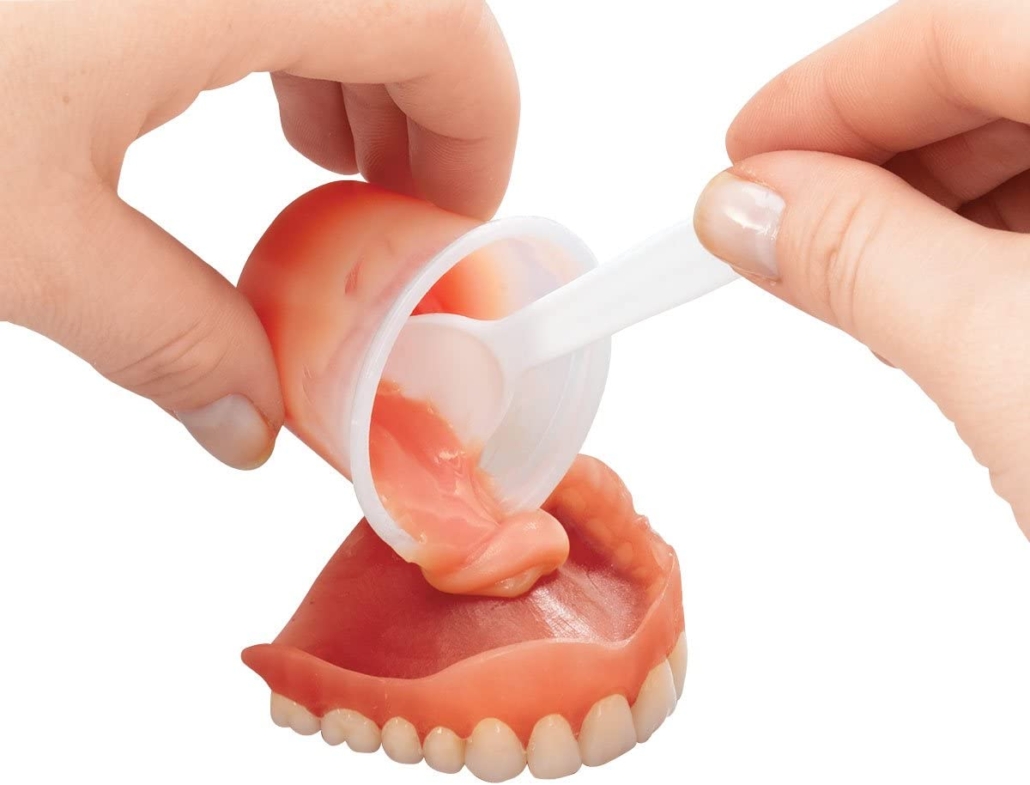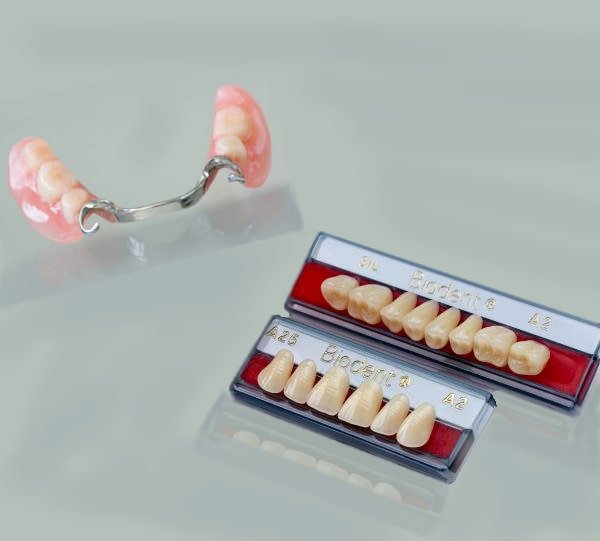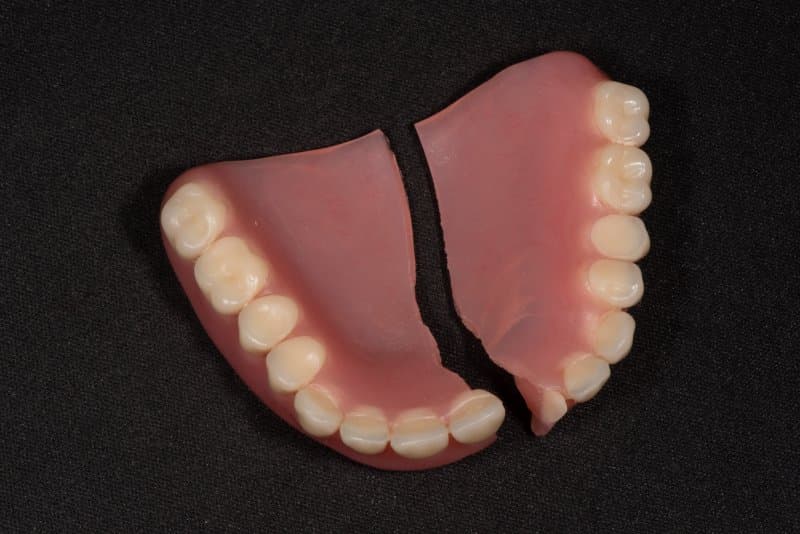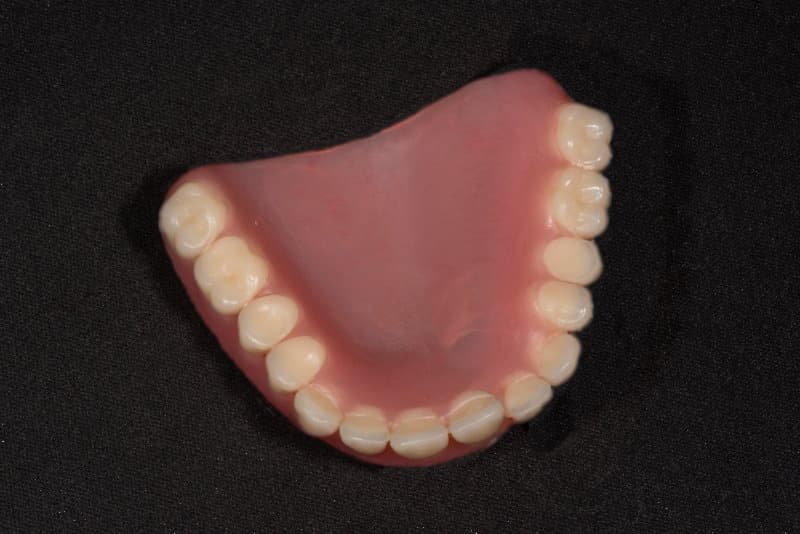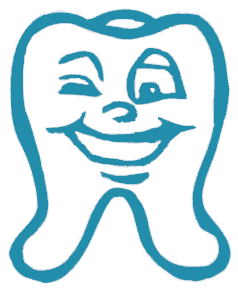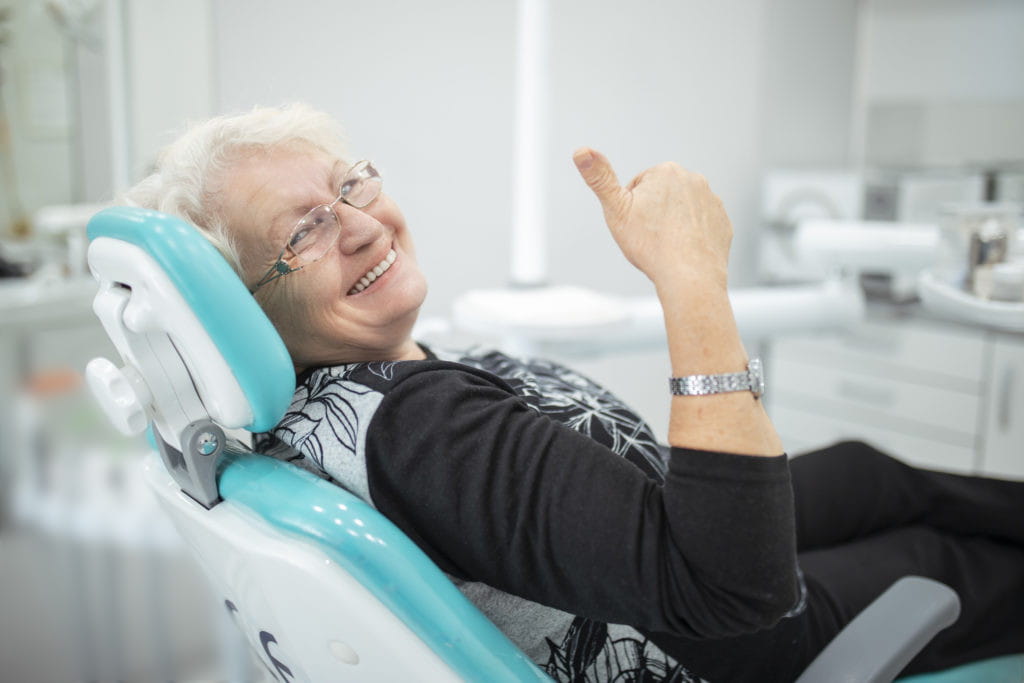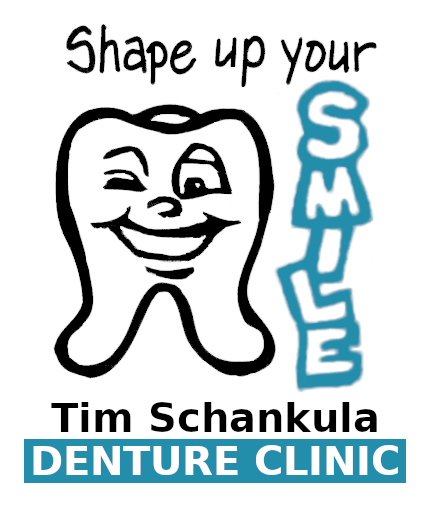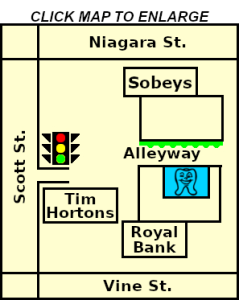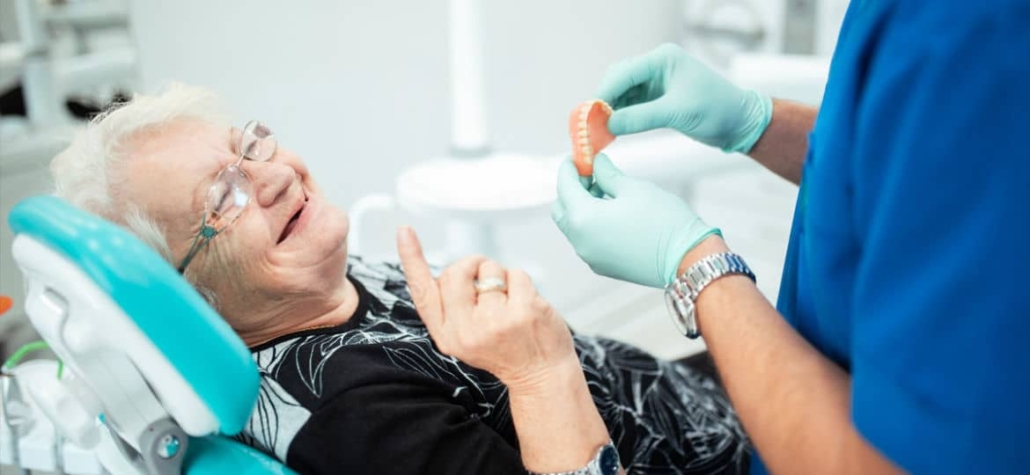 Whether you are getting a new denture made, teeth added onto your partial denture, or having a reline, rebase, adjustment or repair, this page will help you understand your appointments. For example, Relines & Rebases, Adjustments and Repairs are usually same day, with relines and repairs needing two appointments that day, and adjustments only one appointment. Additions to Your Partial Dentures usually takes 2 appointments, usually over 1-3 days depending on whether we have the teeth in stock. Making a new, Regular Denture for you usually takes 4-5 appointments, usually over 3-4 weeks, all depending on the type of denture(s) you need—a Full Denture or a Partial Denture. This includes Implant Retained Dentures. If it’s an Immediate Denture instead of a regular one we’re making for you, the number of appointments and time period is usually less. Below we outline how many visits to our clinic you will need and for what kind of denture and procedure. An explanation for each kind of appointment then follows.
Whether you are getting a new denture made, teeth added onto your partial denture, or having a reline, rebase, adjustment or repair, this page will help you understand your appointments. For example, Relines & Rebases, Adjustments and Repairs are usually same day, with relines and repairs needing two appointments that day, and adjustments only one appointment. Additions to Your Partial Dentures usually takes 2 appointments, usually over 1-3 days depending on whether we have the teeth in stock. Making a new, Regular Denture for you usually takes 4-5 appointments, usually over 3-4 weeks, all depending on the type of denture(s) you need—a Full Denture or a Partial Denture. This includes Implant Retained Dentures. If it’s an Immediate Denture instead of a regular one we’re making for you, the number of appointments and time period is usually less. Below we outline how many visits to our clinic you will need and for what kind of denture and procedure. An explanation for each kind of appointment then follows.
This page describes what actually happens at the different kinds of appointments, so you get an idea of what to expect and have some understanding of the procedures used for each kind of service.
TABLE OF CONTENTS
You can use this list to jump down to a specific Appointment Type below:
- Free Consultation
- For New Dentures:
- Finished Denture Inserted (for all kinds of different services: New Denture, Reline, Rebase, or Add-On to your Existing Partial Denture)
- Nylon or O-Ring Replacement (for Implant Dentures)
- Adjustment (for all dentures)
- Reline Impressions (for all dentures)
- Rebase Impressions (for all dentures)
- Temporary Liner (Tissue Conditioner) (for Immediate Dentures)
- Add-On Impressions (for Partial Dentures)
- Broken Denture Drop-off (for all dentures)
- Repaired Denture Pick-up (for all dentures)
For the Number of Appointments needed for each service, and the period of time involved, see the individual pages for the different services:
Free Consultation
We provide a Free Consultation appointment, at which your denturist will discuss with you your needs, answer your questions and offer you specific treatment options with printed estimates and recommendations for whatever service you are interested in: New Dentures (full (complete) dentures or partial dentures), Immediate Dentures, Implant Dentures, Permanent Soft Liners on New or Old Dentures, Relines or Rebases, Add-Ons to Partial Dentures, and Repairs. You can also certainly call us anytime and book an appointment for any needed Adjustments to your denture(s). There is never any obligation with a consultation. But if you are interested, you can think about it and call us sometime to book an appointment for the particular service, or often if you are a go, the service can begin (or happen) in that same consultation appointment.
Preliminary Impressions (for New Dentures)
Your denturist will choose the right impression tray that will fit your mouth, one for the top and one for the bottom. Even though you may only be getting a denture for the top OR the bottom, an impression needs to be taken for both the top and bottom in order for your denturist to know exactly how you bite down during the denture fabrication process. This ensures an accurate fit and so your finished dentures, jaws and teeth come together perfectly when you bite down.
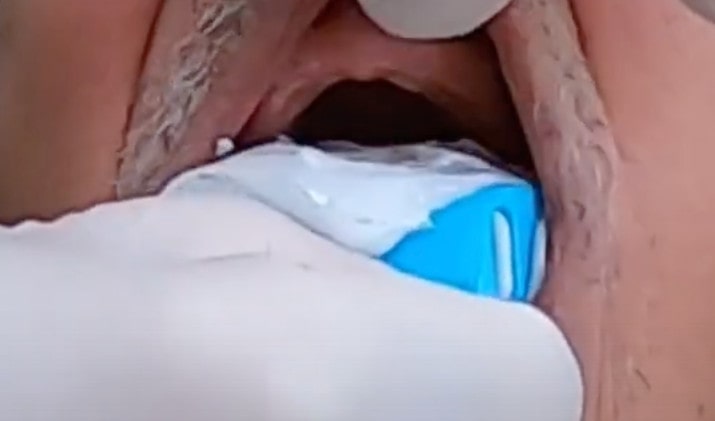 Each impression tray with its alginate is inserted one at a time into your mouth and held there by your denturist for a brief time (approximately 40-60 seconds) until it sets (becomes almost like rubber); the alginate is quick setting. The taking of impressions procedure is a quick and painless process: we ensure that it is done with minimal discomfort for you. It only serves to ensure accurate results for your denture fabrication. Your denturist then carefully removes the impression tray from your mouth, with the shape of your teeth and ridges set in the impression material. The preliminary impressions serve the purpose of getting a rough impression of how your ridges are contoured (along with impressions of whatever natural teeth you still have).
Each impression tray with its alginate is inserted one at a time into your mouth and held there by your denturist for a brief time (approximately 40-60 seconds) until it sets (becomes almost like rubber); the alginate is quick setting. The taking of impressions procedure is a quick and painless process: we ensure that it is done with minimal discomfort for you. It only serves to ensure accurate results for your denture fabrication. Your denturist then carefully removes the impression tray from your mouth, with the shape of your teeth and ridges set in the impression material. The preliminary impressions serve the purpose of getting a rough impression of how your ridges are contoured (along with impressions of whatever natural teeth you still have).
Final Upper Impression (for New Dentures)
Using the upper preliminary plaster model (see it immediately above), a customized upper impression tray made of special plastic is made. The inside of this tray therefore is contoured like your personal upper ridges. The shape is embedded in the material: in this case our example patient has no natural teeth left on his upper palate.
Final impression material is placed into the custom upper impression tray that will be used to get a more precise final impression of your upper ridges.
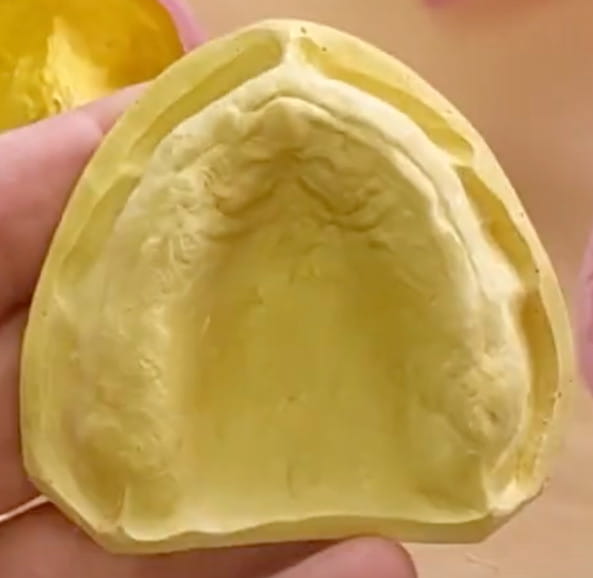 With this final impression, a working master model—that the denture will be built on—is poured up in a hard stone material. This will ensure a comfortable and stable fit in the majority of cases.
With this final impression, a working master model—that the denture will be built on—is poured up in a hard stone material. This will ensure a comfortable and stable fit in the majority of cases.
Bite (for New Dentures)
In a Bite appointment, your denturist uses what’s called a bite block made out of wax—that was made using either your plaster or stone model—in order to take a series of measurements to capture how your upper and lower jaws come together when you bite down. This is to ensure that your final denture is made to match your bite.
At the Grantham Denture Clinic, your Bite appointment for a New Upper Denture (a Full Upper Denture or a Partial Upper Denture) uses a wax bite block that was made using your upper stone model. For the lower, a lower bite block is made onto the plaster model and the bite and the lower final impression is taken on the same appointment (3rd appointment).
At the Grantham Denture Clinic, your Bite appointment for a New Upper Denture (a Full Upper Denture or a Partial Upper Denture) uses a wax bite block that was made using your upper stone model. For the lower, a lower bite block is made onto the plaster model and the bite and the lower final impression is taken on the same appointment (3rd appointment).
Your denturist inserts the wax bite block into your mouth (whether it’s upper or lower), and begins to take a series of measurements. What’s called a Bite Registration is also taken by using bite registration paste (or softened wax) that has been put onto your wax bite blocks: you will be asked to bite down into it, leaving an imprint in the paste (or wax). Minor readings are also taken, such as high lip line, low lip line, centre line, cuspid line, overbite, and overjet. All of this is to help your denturist make denture(s) for you that work precisely to how your jaws come together when you bite down.
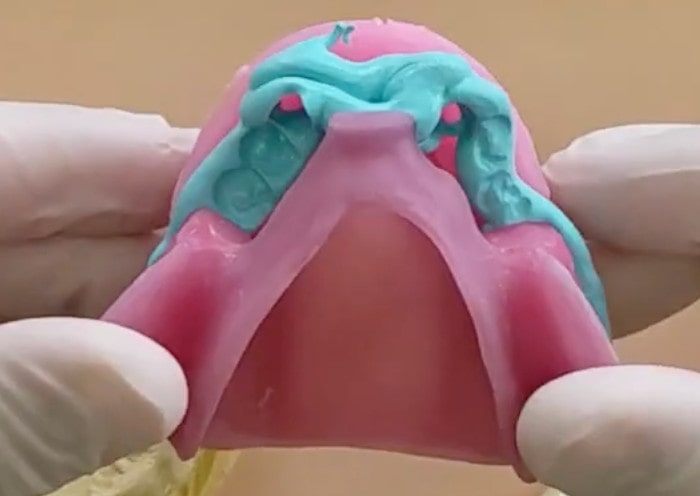 What’s called a Bite Registration is also taken by using bite registration paste (or softened wax) that has been put onto your wax bite blocks: you will be asked to bite down into it, leaving an imprint in the paste (or wax). Minor readings are also taken, such as high lip line, low lip line, centre line, cuspid line, overbite, and overjet. All of this is to help your denturist make denture(s) for you that work precisely to how your jaws come together when you bite down.
What’s called a Bite Registration is also taken by using bite registration paste (or softened wax) that has been put onto your wax bite blocks: you will be asked to bite down into it, leaving an imprint in the paste (or wax). Minor readings are also taken, such as high lip line, low lip line, centre line, cuspid line, overbite, and overjet. All of this is to help your denturist make denture(s) for you that work precisely to how your jaws come together when you bite down.
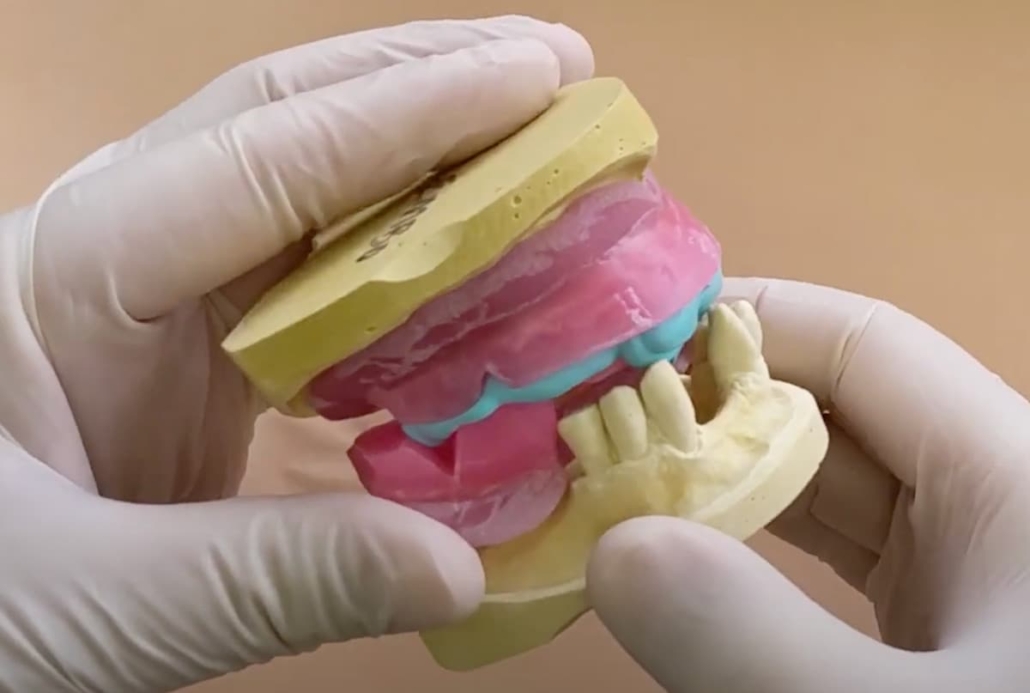 With the Bite appointment done, your denturist can now use your final stone models with wax bite block and imprinted bite registration paste to actually make the denture.
With the Bite appointment done, your denturist can now use your final stone models with wax bite block and imprinted bite registration paste to actually make the denture.
Wax Try-in (for New Dentures)
At the Wax Try-in appointment, you get to put the actual dentures into your mouth, but with the pink denture base made out of wax instead of acrylic. Based on the Final Impression and the final, master stone models (see above), your denturist put wax onto the model for your denture (upper or lower, or both) and placed the chosen artificial teeth into that wax in the right spots and doing micro-adjustments to make it all look natural and excellent. The end result is a pretty accurate facsimile of your final denture.
At your Wax Try-in appointment, then, you can use a handheld mirror to have a look. You can also assess how they feel. You are also welcome to bring in a relative or friend with you into the operatory to give their opinion. Your denturist will give you the privacy to discuss it as well. If either you or your denturist want some changes, because the base is still made of wax, those changes will be made. You will let your denturist know if you wish any changes made—whether it may be length, size, positioning and/or colour, if you wish the teeth offset (set crooked), if you wish a space between your two front teeth or a tooth tilted, etc.—and you will then be brought in when the changes are made in order to take a second look to ensure you’re happy with the appearance. If no changes are needed or they are only minor, your denturist will finish it off, replacing the wax with acrylic precisely. If changes are needed, your denturist will make the changes and have you come in for another Wax Try-in.
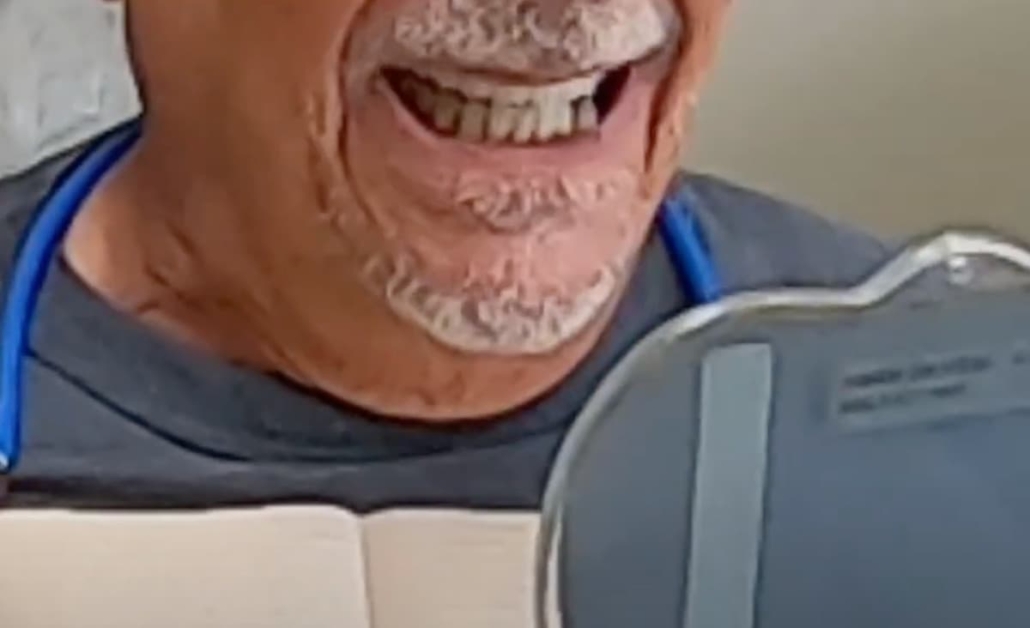 At your Wax Try-in appointment, then, you can use a handheld mirror to have a look. You can also assess how they feel. You are also welcome to bring in a relative or friend with you into the operatory to give their opinion. Your denturist will give you the privacy to discuss it as well. If either you or your denturist want some changes, because the base is still made of wax, those changes will be made. You will let your denturist know if you wish any changes made—whether it may be length, size, positioning and/or colour, if you wish the teeth offset (set crooked), if you wish a space between your two front teeth or a tooth tilted, etc.—and you will then be brought in when the changes are made in order to take a second look to ensure you’re happy with the appearance.
At your Wax Try-in appointment, then, you can use a handheld mirror to have a look. You can also assess how they feel. You are also welcome to bring in a relative or friend with you into the operatory to give their opinion. Your denturist will give you the privacy to discuss it as well. If either you or your denturist want some changes, because the base is still made of wax, those changes will be made. You will let your denturist know if you wish any changes made—whether it may be length, size, positioning and/or colour, if you wish the teeth offset (set crooked), if you wish a space between your two front teeth or a tooth tilted, etc.—and you will then be brought in when the changes are made in order to take a second look to ensure you’re happy with the appearance.
Finished Denture Inserted (for all kinds of different Services)
It is at your Insertion appointment where you receive your completed denture(s). If it is a New Denture, then following the previous Wax Try-in appointment, where both you and your denturist were happy with everything, your denturist finished off the denture in the lab, replacing the wax with the hard pink acrylic, and putting the denture through a special curing process. If it is a Reline or Rebase, or an Add-On to your Existing Partial Denture, then similar lab work would have been performed by your denturist. If a Permanent Soft Liner is part of your Treatment Plan, then that would have been added at this point as well.
After all the lab procedures, the denture was then polished up and disinfected, ready for you to try in at your Insertion appointment. Upon trying it in, if you feel any discomfort or pain, your denturist will do any necessary series of Adjustments. If everything feels great, you’re all done: you can wear the dentures home and begin a new life impressing everyone with your smile again, and being able to function properly once again.
When any new denture is inserted, especially if it’s your first denture, it will always feel awkward and like a mouthful, and it will feel foreign. It takes patience and practice to get used to the positioning of the teeth and the thickness of the acrylic. Speech will be slightly different at the very beginning, and learning to chew properly will take practice to ensure you are chewing on both sides of your mouth at the same time to maintain stability of the dentures. Once again, it takes patience on your part and a lot of practice using them.
If this was a New Denture, then you will also be given (i) a complimentary denture bath (a container that you can use to store your denture(s) whenever they are out of your mouth, such as when you are soaking them in a cleaning solution overnight (you take them out of your mouth overnight to give your mouth a rest)) and (ii) a complimentary special denture brush that you can clean them with. Your denturist will also explain to you how to take care of your New Dentures and other special instructions, and give you (iii) a print-out on paper of those same instructions. You can view or download it on our Downloads page.
 Upon trying it in, if you feel any discomfort or pain, your denturist will do any necessary series of Adjustments. If everything feels great, you’re all done: you can wear the dentures home and begin a new life impressing everyone with your smile again, and being able to function properly once again.
Upon trying it in, if you feel any discomfort or pain, your denturist will do any necessary series of Adjustments. If everything feels great, you’re all done: you can wear the dentures home and begin a new life impressing everyone with your smile again, and being able to function properly once again.
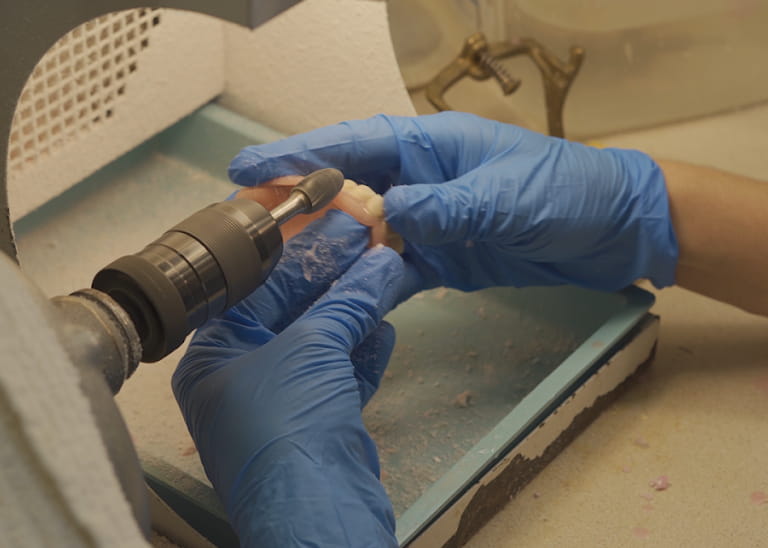 Insertions pretty much happen the same way whether you are getting a New Denture, a Reline or Rebase, or an Add-On to your Existing Partial Denture. In every case, you are getting dentures that have been changed in a significant way: so you try in the finished denture—whatever the procedure—and see how it feels. If one or more Adjustments are needed, your denturist can do them right away in the on-site lab.
Insertions pretty much happen the same way whether you are getting a New Denture, a Reline or Rebase, or an Add-On to your Existing Partial Denture. In every case, you are getting dentures that have been changed in a significant way: so you try in the finished denture—whatever the procedure—and see how it feels. If one or more Adjustments are needed, your denturist can do them right away in the on-site lab.
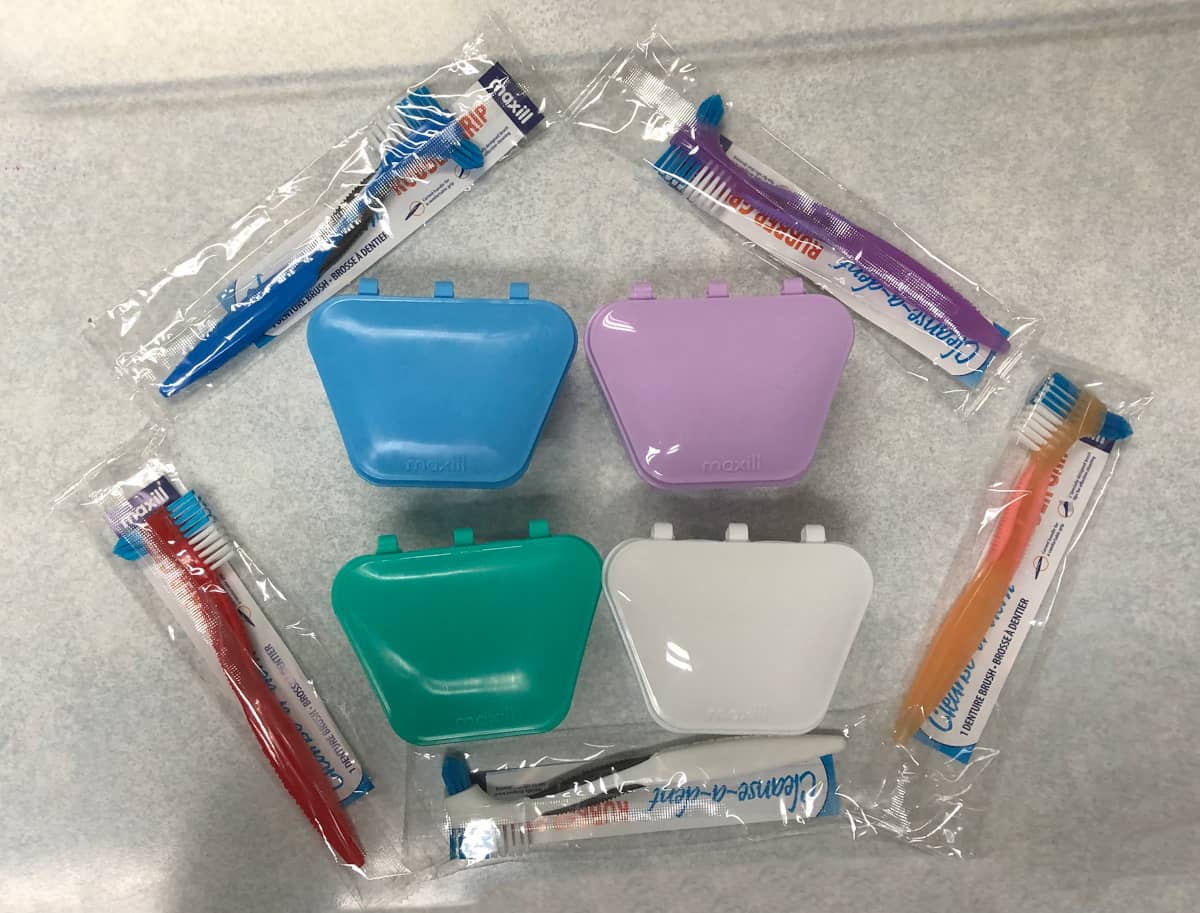 If this was a New Denture, then you will also be given (i) a complimentary denture bath (a container that you can use to store your denture(s) whenever they are out of your mouth, such as when you are soaking them in a cleaning solution overnight (you take them out of your mouth overnight to give your mouth a rest)) and (ii) a complimentary special denture brush that you can clean them with.
If this was a New Denture, then you will also be given (i) a complimentary denture bath (a container that you can use to store your denture(s) whenever they are out of your mouth, such as when you are soaking them in a cleaning solution overnight (you take them out of your mouth overnight to give your mouth a rest)) and (ii) a complimentary special denture brush that you can clean them with.
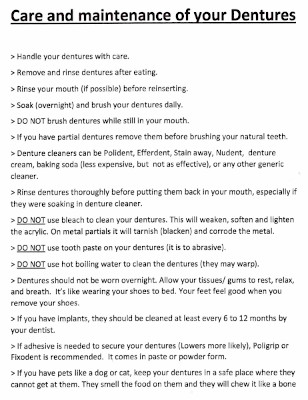 Your denturist will also explain to you how to take care of your New Dentures and other special instructions, and give you (iii) a print-out on paper of those same instructions. You can view or download it on our Downloads page.
Your denturist will also explain to you how to take care of your New Dentures and other special instructions, and give you (iii) a print-out on paper of those same instructions. You can view or download it on our Downloads page.
Nylon or O-Ring Replacement (for Implant Dentures)
If you have an Implant Retained Denture—whether we made it for you or you had it made somewhere else—you can call us whenever the retention of your Implant Denture on your Implant Posts has worn out (it’s no longer holding well). This happens because the Nylon Inserts (for Locator type Implants) or rubber O-Rings (for Ball type Implants) need to be replaced (in this photo, you can see one blue Nylon Insert in one of the metal Housings on this Locator type Implant Denture, with the other blue Nylon Insert at the end of the special tool to be placed into the other housing). You can give us a call to book an appointment to replace them.
Adjustment (for all dentures)
An Adjustment appointment is usually for when you are feeling some pain or discomfort with your denture, or a sore spot has developed, whether it happens when you are at your Denture Insertion appointment, or any other time at home over the years. At your appointment, you can tell your denturist where it hurts and the nature of the pain, and, with our lab on site, a tiny adjustment, or series of incremental tiny adjustments, can be made to your denture while you are sitting in the dental chair. Sometimes you can’t tell right away if the adjustment does make it feel better, and you have to go home and try it out for one or more days. If there is still some discomfort, you only have to give us a call to book another Adjustment appointment.
Another type of Adjustment that you may need is for when you have a Partial Denture that feels slightly loose and all you need is for your denturist to tighten one or more clasps (the metal hooks that wrap around your teeth to hold the denture in your mouth). However, as the metal frame of a partial ages, over time (many, many years) the metal will get fatigued, so the more you bend it, the higher the probability of the clasp breaking: so if the partial is very old, we may not be able to tighten it.
Another type of Adjustment that you may need is for when you have a Partial Denture that feels slightly loose and all you need is for your denturist to tighten one or more clasps (the metal hooks that wrap around your teeth to hold the denture in your mouth). However, as the metal frame of a partial ages, over time (many, many years) the metal will get fatigued, so the more you bend it, the higher the probability of the clasp breaking: so if the partial is very old, we may not be able to tighten it.
Reline Impressions
A Reline of your existing denture is done when it has become loose due to gum shrinkage and bone resorption over time. In a Reline, your denturist adds a Permanent Liner (or a Permanent Soft Liner for some people) to your existing denture based on new Impressions of your mouth (new impressions provide the exact current shape of your jaw bones and gums, and the tissues between them). In other words, a Reline is a simple procedure that aims to reshape the underside of your denture in order to make it fit in your mouth on top of your gums, ridges and around natural teeth more securely and comfortably.
A Reline involves two appointments, usually on the same day. In the first appointment, the Impressions are taken (you can read more about Impressions above for New Dentures). In the second appointment (the Finished Denture Inserted appointment—read all about that above too), you pick up the finished, relined denture.
A Reline involves two appointments, usually on the same day. In the first appointment, the Impressions are taken (you can read more about Impressions above for New Dentures). In the second appointment (the Finished Denture Inserted appointment—read all about that above too), you pick up the finished, relined denture.
Rebase Impressions
A Rebase of your existing denture is done when it has become loose due to gum shrinkage and bone resorption over time, but the pink acrylic base of your denture is in too bad a shape to allow a successful Reline (due to continuous breakage of the denture), but the teeth themselves are still in good-enough shape so you don’t need the fabrication of a New Denture. In some cases, the poor positioning of the teeth can cause or contribute to an ill-fitting denture or denture breakage. A Rebase may not solve the problem in some cases (to be discussed with your denturist). In a Rebase, the entire pink acrylic base of the denture is removed and a new denture base is made based on the new Impressions (a Permanent Soft Liner may also be added for some people). Like in a Reline, a Rebase aims to reshape the underside of your denture in order to make it fit in your mouth on top of your gums and ridges more securely and comfortably, but the new base means a Rebase is almost like having a brand new denture, except for the teeth themselves.
Like a Reline, a Rebase involves two appointments, usually on the same day. In the first appointment, the Impressions are taken (you can read more about Impressions above for New Dentures). In the second appointment (the Finished Denture Inserted appointment—read all about that above too), you pick up the finished, rebased denture.
Temporary Liner (Tissue Conditioner)
A Temporary Liner (a.k.a. Tissue Conditioner or temporary reline), is usually placed into an Immediate Denture when it gets too loose to wear, as the swelling in your gums from the surgery to extract your teeth goes down and your gums shrink. An Immediate Denture is a special type of denture that is made for when you are getting extractions done—by your dentist, or in some cases an oral surgeon—and when you want to wear a denture right away instead of waiting for your mouth to heal first before getting fitted with a new denture. When your Immediate Denture has become too loose to wear, you would call us to book a Temporary Liner appointment, in which your denturist inserts the Tissue Conditioner “chair-side“—which means right there with you in the dental chair.
Note that the shrinkage with Immediate Dentures is much swifter, happening usually over several months (up to a year or two at most), than the shrinkage that occurs when you need a Reline (or Rebase)—that shrinkage is quite slow, happening usually over many years, because it is due to tissue shrinkage and bone resorption over time caused by either aging, weight loss or Periodontal Disease (unless the weight loss is quite sudden, which could cause rapid resorption (shrinkage)).
Add-On Impressions
Our Add-On services are for when you’ve only lost one or more natural teeth or had them extracted, and your Existing Partial Denture is still in good shape: we can then add on artificial teeth to your partial denture so that you don’t have gaps in your mouth. Your denturist will also add on any clasps (the metal hooks that wrap around your remaining natural teeth to hold the denture in), since you may have lost the previous anchor teeth.
Also at your first appointment, your denturist, consulting with you, will pick the right Shade (colour) of your new teeth based on matching the shade of the other teeth in your denture as close as possible, and possibly taking into consideration the shade of your remaining natural teeth.
Also at your first appointment, your denturist, consulting with you, will pick the right Shade (colour) of your new teeth based on matching the shade of the other teeth in your denture, and possibly taking into consideration the shade of your remaining natural teeth.
Broken Denture Drop-off
We can Repair your denture when broken or cracked, or replace a broken or lost tooth or clasp on it, usually same day—assuming we have your tooth in stock if it needs replacing. Even if we need to order the tooth, it usually comes within a day or two. Give our office a call to let us know of the problem, and most of the time we just say, “No problem, you can drop it off anytime.” For some repair work, you don’t even need to personally be the person dropping off the denture: for example, it’s possible for a son or daughter to drop it off on behalf of their parent in a nursing home. However, though it is rare, some repairs do require you personally because the denturist needs to ensure the denture still feels comfortable after that type of repair or that type of denture, and with you there, Adjustments can be made. Our office may be able to tell you that on the phone based on the notes in your file, or tell you when you drop off the denture. Repairs usually take 2-3 hours (depending on how busy we are), and your denturist will let you know when you can pick up your repaired denture.
Repaired Denture Pick-up
When you pick up your repaired denture in person, you can try it in right there at the front desk, and if all is well, you’re all set to go. If something feels not quite right (perhaps you have a bit of discomfort), then your denturist can make any necessary Adjustments. If someone else is picking up the repaired denture on your behalf, we will give it to you in a disinfection pouch to take to the patient. If the denturist had told you at the drop-off time that you will need to try in the repaired denture in the operatory to make sure everything is okay, you will be directed to the dental chair for a closer assessment. If any Adjustments are needed at that time, your denturist will usually be able to do them immediately.
Call us to book your Free Consultation appointment
or discuss more with us on the phone!
Call us to book your
Free Consultation appointment
or discuss more with us
on the phone!
